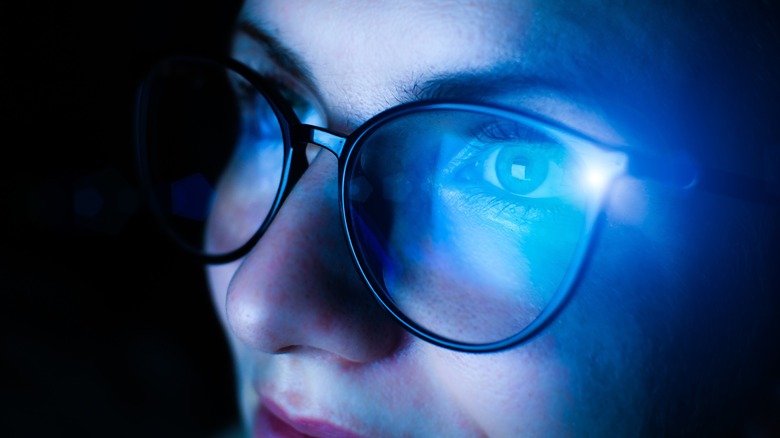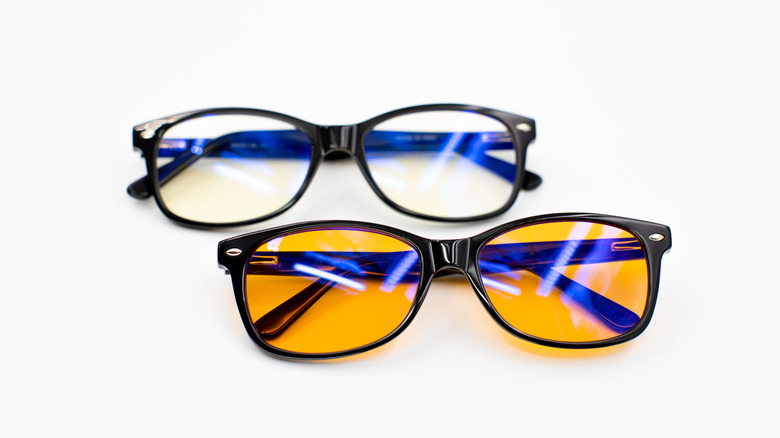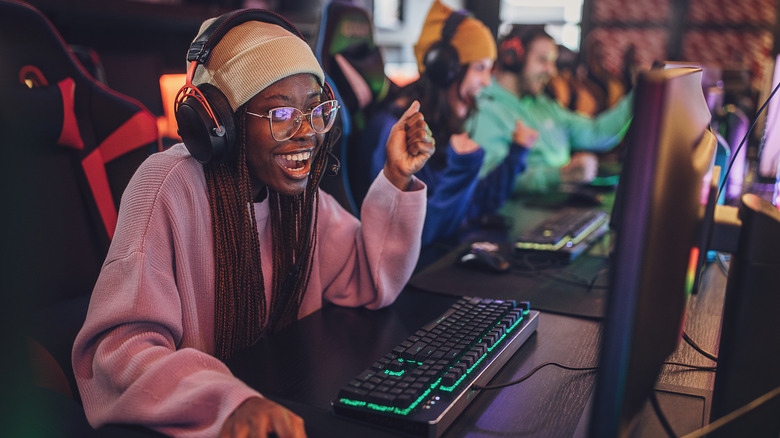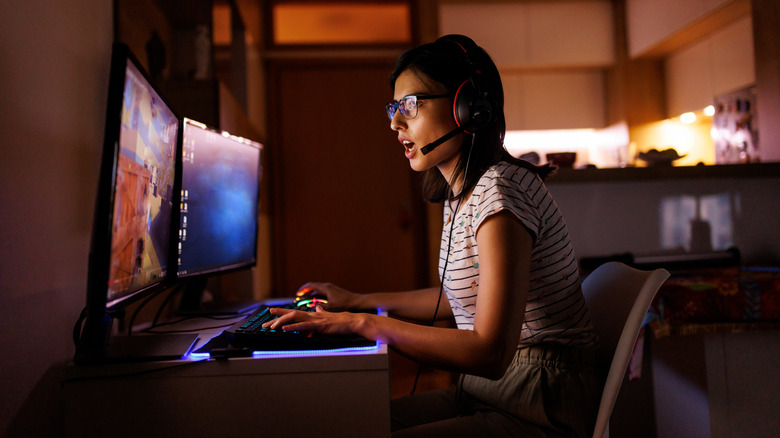Why Do Gamers Wear Gaming Glasses & Do They Really Work?
Video games have been around for decades, but the industry is bigger now than ever before. Practically everyone games in some form or fashion, whether you're playing with friends on consoles, getting competitive on a gaming PC, or checking out the best arcade games on Android. According to the Entertainment Software Association (ESA), 65% of Americans play video games for at least an hour a week, including 62% of adults and 76% of children. With that many gamers, it shouldn't come as a surprise that everyone wants in on the action.
There is plenty of money to be made in the gaming industry, and there certainly isn't a lack of products. Some things, like this laptop bag or top-rated surround sound headsets, can be seen as essential accessories for any gamer. One product that has been a hot topic since its inception is gaming glasses. The video-game-oriented eyewear claims to be the go-to solution for reducing eye strain during those long hours spent gaming, but many people are understandably unconvinced. Do they really work, or are they just the latest product to capitalize on trends and buzzwords?
What are gaming glasses?
While tenured gamers have undoubtedly heard of gaming glasses before, newcomers to the industry may not be as familiar. So, before we get into their effectiveness, let's dive into what gaming glasses actually are. One of the biggest downsides of video games is the toll they take on your eyes. Well, the games themselves aren't to blame, but staring directly at a screen for hours on end isn't necessarily natural. Eye strain isn't a life or death problem, but it can manifest itself in dry eyes, blurry vision, headaches, soreness, photophobia, and can even negatively impact your sleep schedule. Essentially, it brings plenty of discomfort, and while it can occur from working long hours or watching TV, it's simple enough to see how video games can be a leading cause.
Gaming glasses market themselves as a way to prevent or help lessen the symptoms of eye strain. They feature a specialized coating on the lenses that reduces reflection and glare, preventing the light from a monitor from reflecting into your eyes. Gaming glasses also boast a special tint that filters blue light, giving the lenses their usual blue or yellow color. Some even have built-in magnification to help you see details better and squint less, while others can implement your prescription into the lenses. But does all of this even really work?
Do gaming glasses work?
Eye strain can become a problem when playing video games. Fatigued eyes are the most common ailment affecting collegiate eSports athletes. However, gaming glasses likely aren't the end-all-be-all solution to your lingering eye problems. According to the American Academy of Ophthalmology (AAO), there is no scientific evidence that suggests the light coming from monitors is damaging our eyes.
Staring at a screen for an extended period of time causes you to blink less, which then might cause eye strain but it isn't a guaranteed side effect. Instead, AAO says the culprit is how people use screens, not something that the screen produces. Furthermore, the American Journal of Ophthalmology conducted a study with 120 symptomatic computer users, concluding that blue-blocking lenses had no effect on their eye strain. Similarly, the Cochrane Library found that there is "little or no effect of blue-light filtering lenses" compared to normal glasses, stating that their tests also did not reduce the symptoms of computer eye strain in their subjects.
Now, this isn't to say gaming glasses don't work at all. A study done by the Journal of Adolescent Health found that blue light-blocking glasses helped reduce the melatonin suppression caused by LED light, meaning they could aid with sleeping problems. However, the experiment only included 13 teenagers. Gaming glasses could help alleviate some of the eye stress caused by video games, but their effectiveness is more of a case-by-case basis instead of a one-size-fits-all solution.
Other ways to mitigate eye strain
So, if gaming glasses aren't the answer, what can you do to help alleviate any lingering eye strain? Well, as the AAO said, it's all about how you use your computer screens, and there are plenty of simple solutions that don't require any money. First and foremost, just blink more. Eye strain only has a chance of becoming a problem if your monitor is keeping your eyes open for extended periods, so just close those bad boys more frequently to retain some moisture. You can also use eye drops if necessary. Another option is to back away from your screen.
The AAO suggests sitting about 25 inches away from your monitor, which is roughly arm's length, and positioning it so that you are slightly looking down at your screen, not straight or up. However, the best thing you can do is to follow the "20-20-20" rule. Every 20 minutes, take 20 seconds to focus on something that is 20 feet away from you. This simple solution cuts back on how much time your eyes are stuck to the screen by implementing regular breaks. It takes about 20 seconds for your eyes to relax, so get up, grab some water, and give your eyes some much-needed rest.



